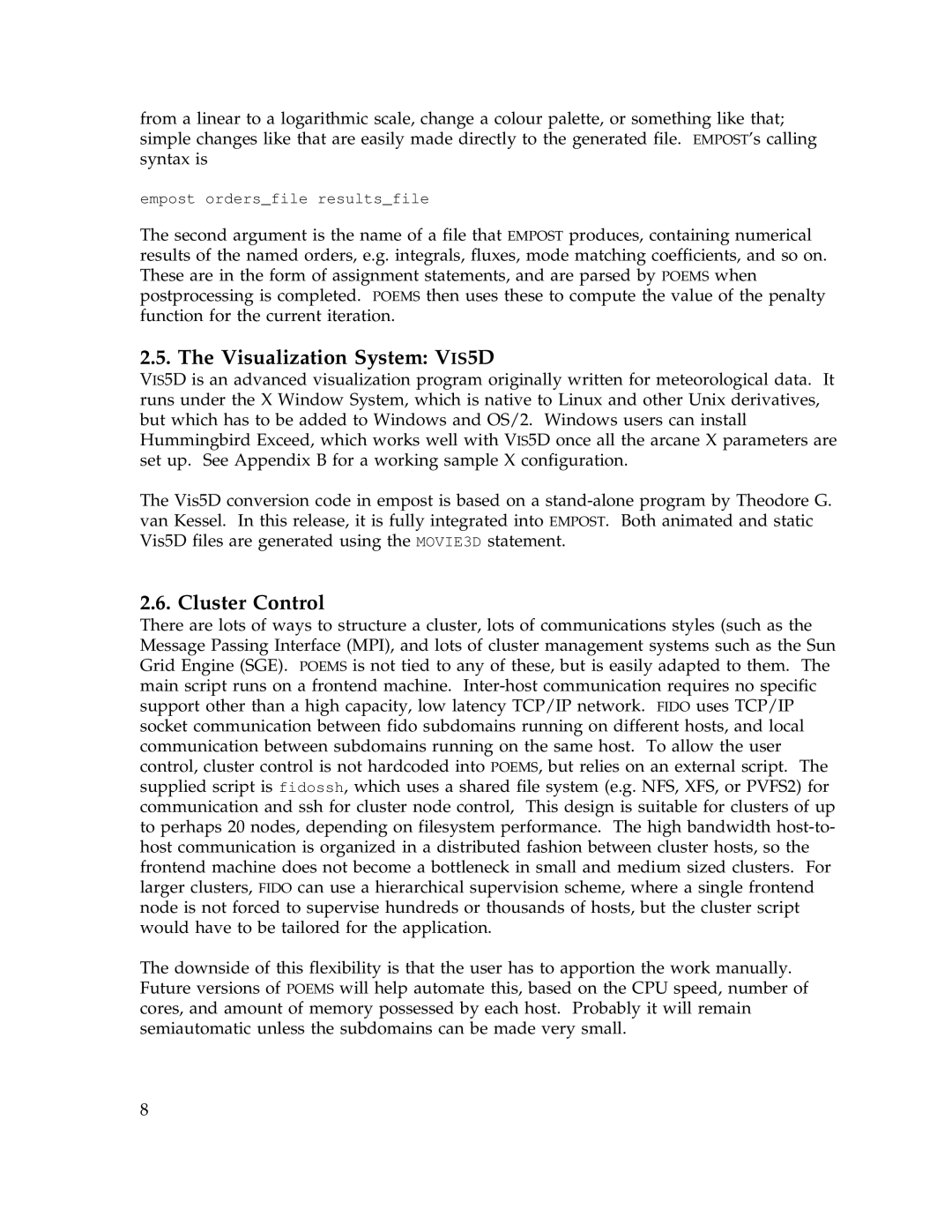from a linear to a logarithmic scale, change a colour palette, or something like that; simple changes like that are easily made directly to the generated file. EMPOST’s calling syntax is
empost orders_file results_file
The second argument is the name of a file that EMPOST produces, containing numerical results of the named orders, e.g. integrals, fluxes, mode matching coefficients, and so on. These are in the form of assignment statements, and are parsed by POEMS when postprocessing is completed. POEMS then uses these to compute the value of the penalty function for the current iteration.
2.5. The Visualization System: VIS5D
VIS5D is an advanced visualization program originally written for meteorological data. It runs under the X Window System, which is native to Linux and other Unix derivatives, but which has to be added to Windows and OS/2. Windows users can install Hummingbird Exceed, which works well with VIS5D once all the arcane X parameters are set up. See Appendix B for a working sample X configuration.
The Vis5D conversion code in empost is based on a
2.6. Cluster Control
There are lots of ways to structure a cluster, lots of communications styles (such as the Message Passing Interface (MPI), and lots of cluster management systems such as the Sun Grid Engine (SGE). POEMS is not tied to any of these, but is easily adapted to them. The main script runs on a frontend machine.
The downside of this flexibility is that the user has to apportion the work manually. Future versions of POEMS will help automate this, based on the CPU speed, number of cores, and amount of memory possessed by each host. Probably it will remain semiautomatic unless the subdomains can be made very small.
8
